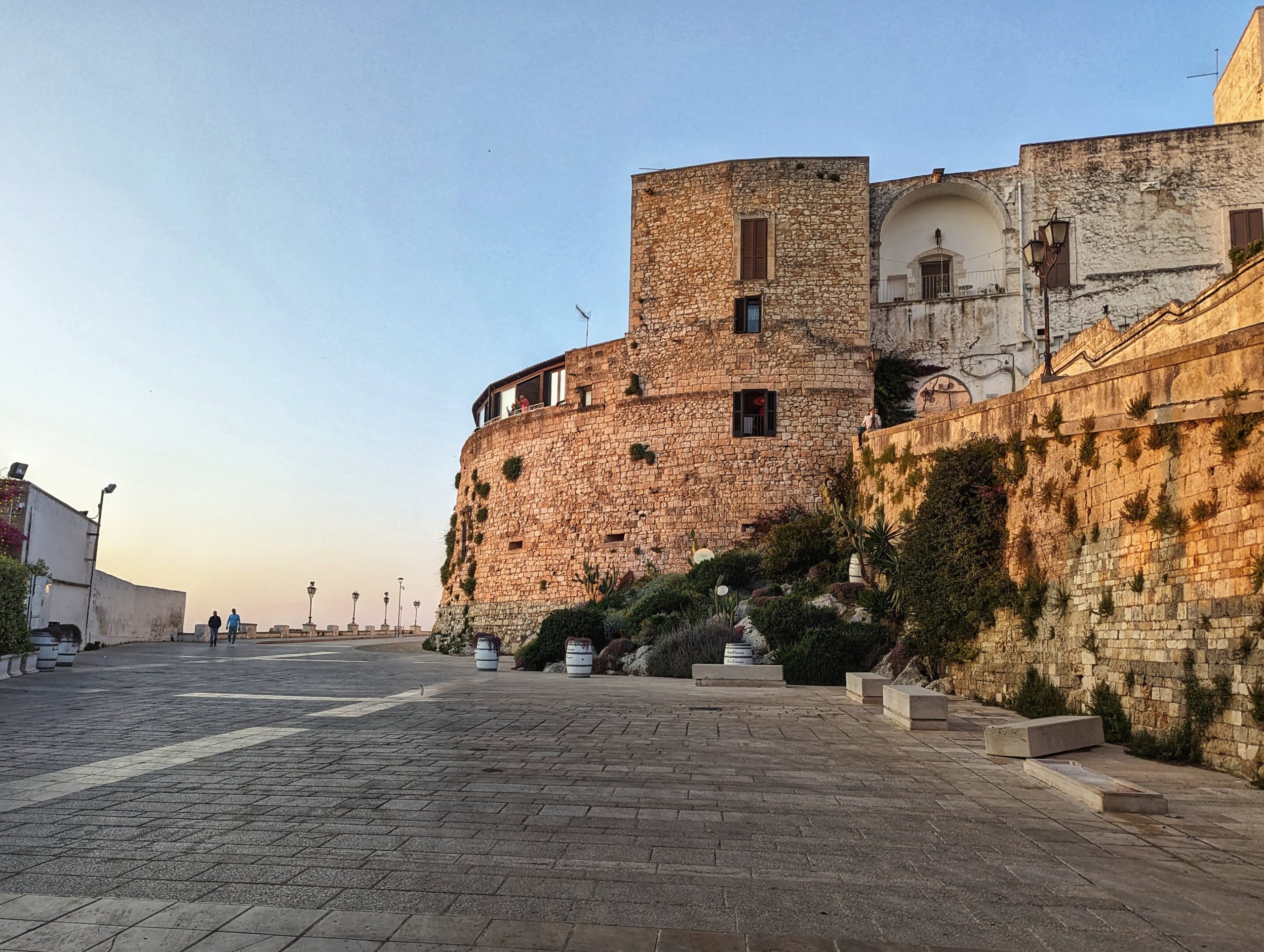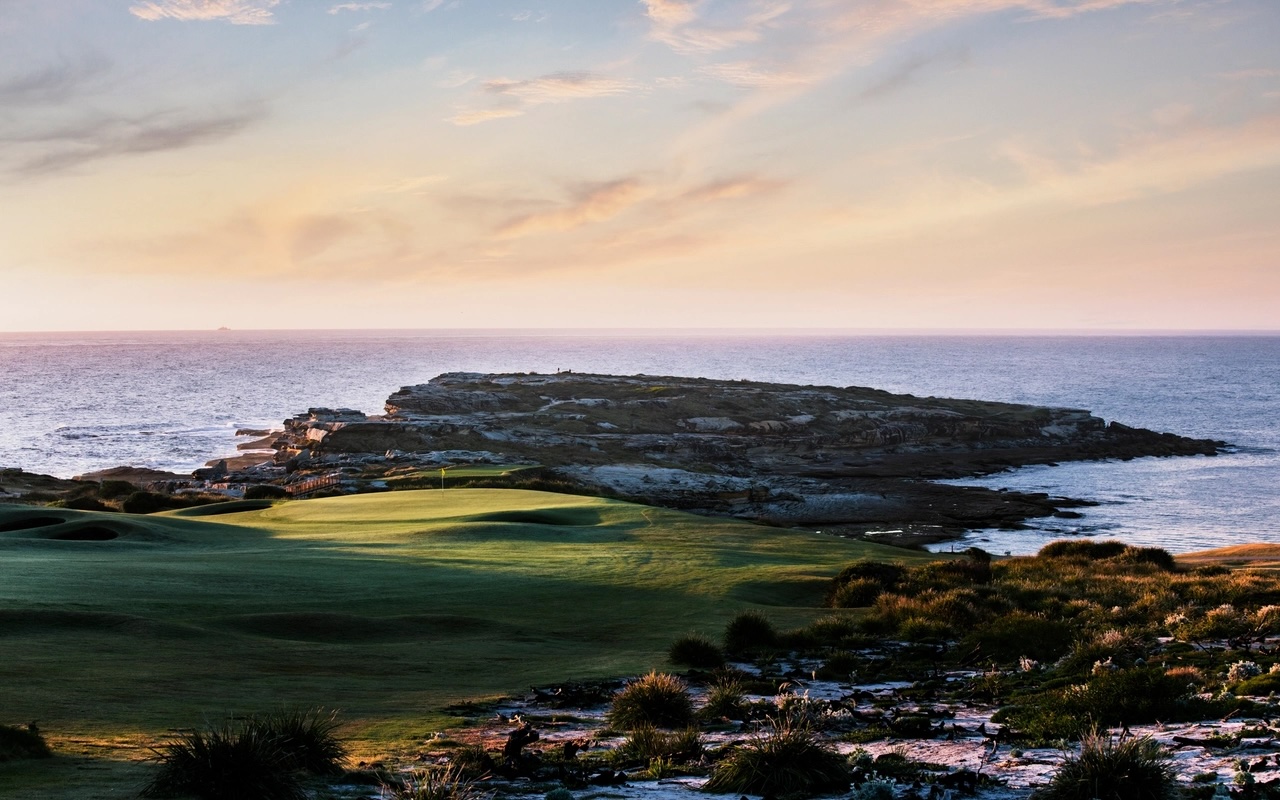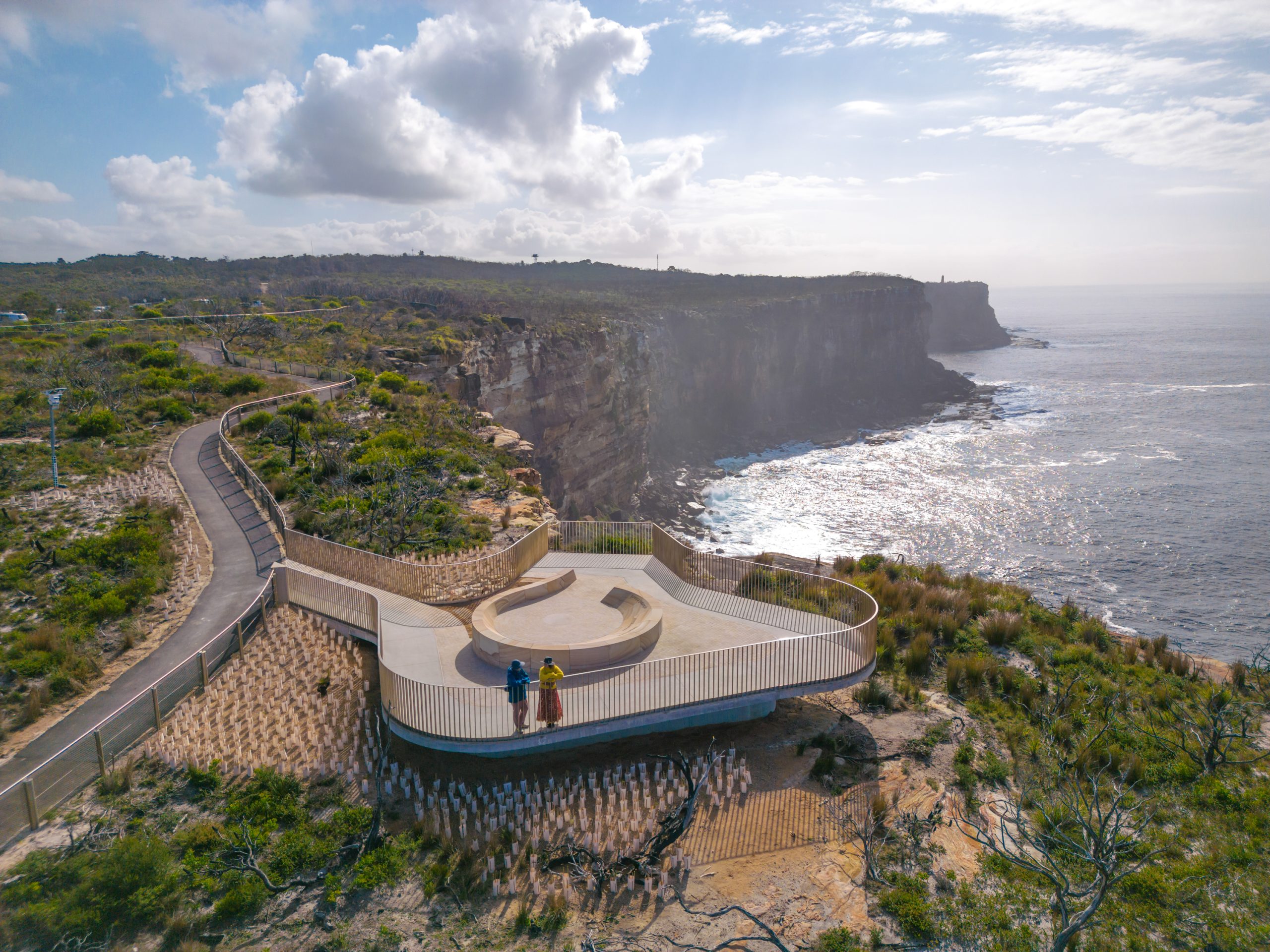The Well-Heeled Are Headed to Puglia, the End of Italy’s Boot
The heel of Italy’s boot is its hospitable heartland, at least to a growing contingent of savvy travellers who find themselves turning to Puglia time and again, perhaps at first for its rusticity, but now for its lavish resorts. It’s been a long time coming for the historically overlooked region and its 500 miles of coastline, most of which is devoid of the crowds overstuffing other parts of the country.
“Puglia is authentic but contemporary, relaxing but full of vibrant energy,” says Aldo Melpignano, owner of Borgo Egnazia, a luxury resort that has helped put the region on the map for international travellers. “It’s becoming more and more an international travel destination, but you can still discover hidden gems and unspoiled places.”
Charming towns line the Adriatic coastline like whitewashed pearls on a string, from Lecce to Brindisi, onward to Ostuni and Monopoli, continuing north to Bari and Trani. The countryside in between showcases the remnants of conical trulli, traditional stone-hut residences, found amid endless olive groves. Its every facet has a distinct Puglian feel, an inimitable aura of charm and hospitality that cannot be replicated.
The Growth of Puglia’s Luxury Scene
“Sometimes when you are in a luxury resort in the Côte d’Azur or Sardinia or Mexico, you feel like you could be anywhere, you don’t have a sense of place” says Vito Palumbo, CEO of Tormaresca winery. “When you are in Borgo Egnazia or Torre Coccaro, though, you know you are in Puglia, you know that you’re in a masseria that has been revamped into a beautiful resort with a very strong Puglian identity.”

Jake Emen
It’s been a quarter century since Tormaresca was acquired by wine conglomerate Antinori, whose financial backing and know-how helped modernize its efforts, transforming its distinctive terroir and native grapes—such as Primitivo, Negroamaro, Aglianco, and Fiano—into sought-after varieties. In more recent years, Palumbo has grown into a role as the face of Tormaresca, but also as the de facto ambassador for Puglia on the whole, dedicated to touting the appeal of his home region.
Puglia’s beloved masserias, or farm estates constructed in village-like fashion, replete with small walkways and central gathering plazas, offer a different spin on Italian luxury and hospitality, versus the villas of Tuscany, the cliff top properties along the Amalfi coast, or the grand dames of Venice and Florence.
One of the initial masserias to make a splash was Masseria Il Melograno, whose grounds are studded with gnarled and wizened 600-year-old olive trees and purple bougainvillea flowers. But when Borgo Egnazia opened in 2010, following a six-year, reported €150 million project, it set the region on a luxurious new path, gaining recognition as one of the top properties in Italy and across continental Europe.
With that kind of success, it was perhaps inevitable that large, international brands would follow course. Rocco Forte added Masseria Torre Maizza to its portfolio in 2018, and in early 2021, Four Seasons announced an Ostuni project, signalling it would be a new construction with direct beach access and 150 villa-style guest rooms. Around the same time, Belmond purchased Masseria Le Taverne, a 17th-century farm estate, and is amid extensive renovations while aiming to maintain the property’s heritage and character.

Jake Emen
“Puglia’s popularity has grown significantly for those looking to explore a different part of Italy and to discover the region’s spectacular coastlines and beautiful beaches, rich history, and exceptional culinary offerings,” says Bart Carnahan, Four Seasons president of global business development and portfolio management.
The Roots Are in the Vineyards and the Olive Groves
At the heart of Puglia’s culinary movement is an appreciation for its local ingredients, from burrata to olive oil and a wealth of fresh seafood.
“Puglia is Italy’s most important region for extra-virgin olive oil production,” Palumbo says, citing overall output and a breadth of styles, with at least 60 types of olives found on millions of trees. Yet, as with the region’s wine, the quality of its olive oil was long overlooked, with the majority being sold in bulk. “Puglian olive oil is going places, and it’s the same story as the wine. There are more strong Puglian olive oil brands than Tuscan ones now.”
Travellers can spend a day on a farm or dairy learning how to make cheese or pressing their own olive oil, perhaps in between visits to its emergent wineries. At Tenuta Bocco di Lupo, the long, sandy white road that serves as its entrance beckons travelers to its grand estate and cellar. There, they can taste wines under its eponymous label, such as an Aglianico from Castel del Monte; Pietrabianca, made with Chardonnay and Fiano from Castel del Monte; and Fiano di Bocca Di Lupo.
Then there’s Tormaresca’s Calafuria, the best-selling rose wine in, and from, Italy. But it’s through the aforementioned offerings, along with bottles such as Torcicoda, a Primitivo from Salento, as well as the Masseria Maime Negroamaro, that Palumbo plans to establish the bonafides of his two estates in the region. What he and his winemakers have found is that Puglian wines made with intention, and reflective of their home place, are more than capable of great ageing potential, with rich character that consumers can expect to develop and unfold in the decade or two to come, while still being able to be poured today and enjoyed. “We want the Puglian influence,” Palumbo says.
Puglia’s restaurant scene has soared as well, with 10 Michelin-starred outposts in the region and scores of other fine-dining establishments. A prestige institution such as Quintessenza, in Trani, is helmed by the four Di Gennaro brothers, each of whom has a different role in the operation of a space devoted in full to showcasing and elevating Puglia’s bounty.

Jake Emen
The best eating though may be in casual, local spots with seaside views or beachfront settings, from the Coccaro beach club and restaurant, to the Trabucco Tormaresca in Trani, a sceney waterfront bar stylised as an old fisherman shack. The best of both worlds can be found at a restaurant such as Osteria del Tempo Perso in Ostuni, where classic Puglian dishes are showcased with the best ingredients, but without unneeded adornment or reinvention, with the service and setting that elevates food with humble origins into a destination dining experience.
Travellers to Puglia can indulge in it all: the excellent food and wine that will satiate the most discerning of palates and the luxurious accommodations that need not play second fiddle to anywhere else in the country, offered with the trademark embrace of the region’s hospitality.
“The ancient traditions of this region represent a unique heritage,” Melpignano says. “What really makes the difference in Puglia is the people: Always heart-warming, they have the sense of welcome in their blood.”
 Copyright 2020, Dow Jones & Company, Inc. All Rights Reserved Worldwide. LEARN MORE
Copyright 2020, Dow Jones & Company, Inc. All Rights Reserved Worldwide. LEARN MORE
This stylish family home combines a classic palette and finishes with a flexible floorplan
Just 55 minutes from Sydney, make this your creative getaway located in the majestic Hawkesbury region.
Continued stagflation and cost of living pressures are causing couples to think twice about starting a family, new data has revealed, with long term impacts expected
Australia is in the midst of a ‘baby recession’ with preliminary estimates showing the number of births in 2023 fell by more than four percent to the lowest level since 2006, according to KPMG. The consultancy firm says this reflects the impact of cost-of-living pressures on the feasibility of younger Australians starting a family.
KPMG estimates that 289,100 babies were born in 2023. This compares to 300,684 babies in 2022 and 309,996 in 2021, according to the Australian Bureau of Statistics (ABS). KPMG urban economist Terry Rawnsley said weak economic growth often leads to a reduced number of births. In 2023, ABS data shows gross domestic product (GDP) fell to 1.5 percent. Despite the population growing by 2.5 percent in 2023, GDP on a per capita basis went into negative territory, down one percent over the 12 months.
“Birth rates provide insight into long-term population growth as well as the current confidence of Australian families,” said Mr Rawnsley. “We haven’t seen such a sharp drop in births in Australia since the period of economic stagflation in the 1970s, which coincided with the initial widespread adoption of the contraceptive pill.”
Mr Rawnsley said many Australian couples delayed starting a family while the pandemic played out in 2020. The number of births fell from 305,832 in 2019 to 294,369 in 2020. Then in 2021, strong employment and vast amounts of stimulus money, along with high household savings due to lockdowns, gave couples better financial means to have a baby. This led to a rebound in births.
However, the re-opening of the global economy in 2022 led to soaring inflation. By the start of 2023, the Australian consumer price index (CPI) had risen to its highest level since 1990 at 7.8 percent per annum. By that stage, the Reserve Bank had already commenced an aggressive rate-hiking strategy to fight inflation and had raised the cash rate every month between May and December 2022.
Five more rate hikes during 2023 put further pressure on couples with mortgages and put the brakes on family formation. “This combination of the pandemic and rapid economic changes explains the spike and subsequent sharp decline in birth rates we have observed over the past four years,” Mr Rawnsley said.
The impact of high costs of living on couples’ decision to have a baby is highlighted in births data for the capital cities. KPMG estimates there were 60,860 births in Sydney in 2023, down 8.6 percent from 2019. There were 56,270 births in Melbourne, down 7.3 percent. In Perth, there were 25,020 births, down 6 percent, while in Brisbane there were 30,250 births, down 4.3 percent. Canberra was the only capital city where there was no fall in the number of births in 2023 compared to 2019.
“CPI growth in Canberra has been slightly subdued compared to that in other major cities, and the economic outlook has remained strong,” Mr Rawnsley said. “This means families have not been hurting as much as those in other capital cities, and in turn, we’ve seen a stabilisation of births in the ACT.”
This stylish family home combines a classic palette and finishes with a flexible floorplan
Just 55 minutes from Sydney, make this your creative getaway located in the majestic Hawkesbury region.






















